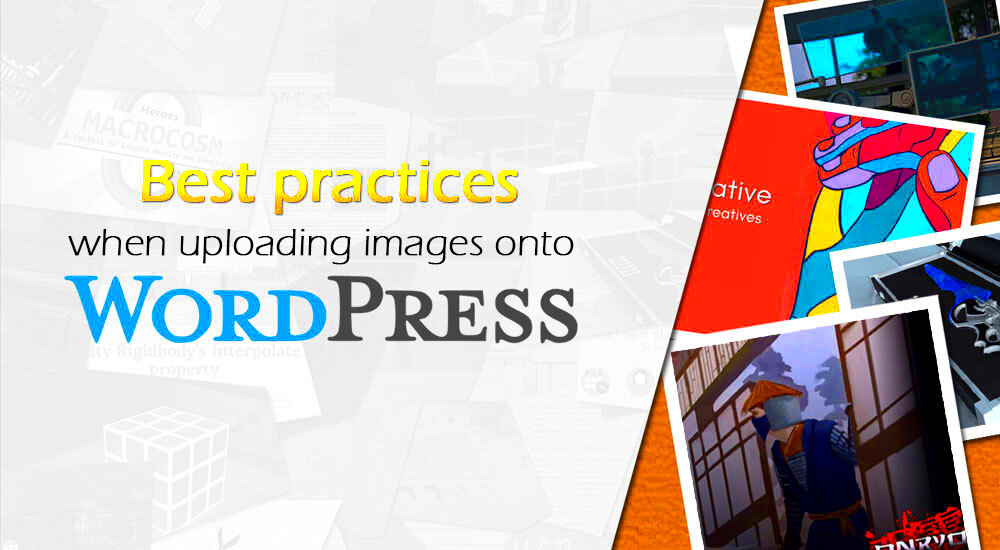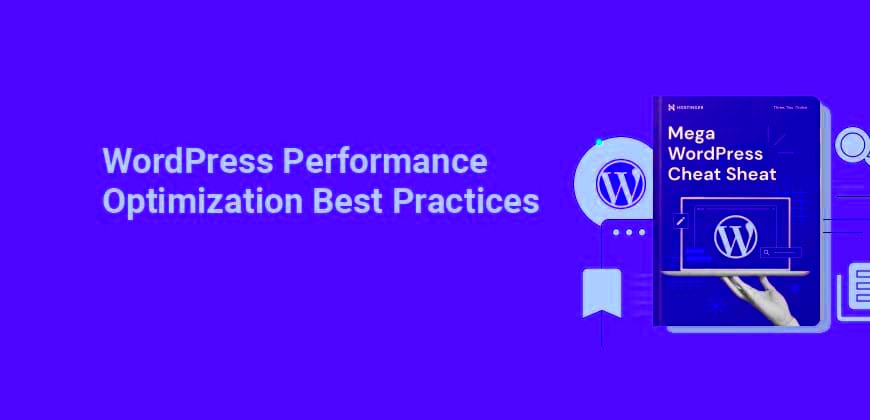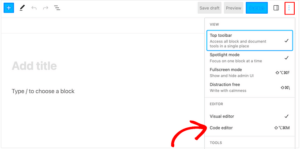Uploading videos to your WordPress website can greatly enhance user engagement, making your content more dynamic and interactive. Whether you’re sharing tutorials, product demos, or personal vlogs, videos have the power to captivate visitors. However, without proper optimization, videos can slow down your site, leading to poor user experience and decreased SEO rankings. In this guide, we’ll explore the best practices for uploading videos on WordPress and how to ensure that your videos perform efficiently on your site.
Understanding the Impact of Videos on Website Performance

Videos are a fantastic tool for delivering content, but they can be heavy and resource-intensive. When not optimized properly, videos can negatively impact your website’s performance in several ways:
- Slow Loading Times: Large video files can increase page load times, making your site sluggish. This can drive visitors away and hurt your search engine rankings.
- Increased Bandwidth Usage: Videos consume a lot of bandwidth, which can cause issues if you have limited hosting resources or serve videos to many users at once.
- Mobile Experience: Poorly optimized videos can also create problems on mobile devices, affecting user experience and engagement.
To avoid these issues, it’s essential to optimize video files, choose the right format, and consider video hosting solutions that ensure smooth performance. The next section covers how to choose the right video format for your WordPress site to avoid slow loading times.
Choosing the Right Video Format for Your WordPress Site

Selecting the right video format is crucial for both quality and performance. Different formats come with varying levels of compression, quality, and browser compatibility. Here’s a look at the most common video formats and when to use them:
| Format | Pros | Cons |
|---|---|---|
| MP4 | High quality, widely supported across all devices and browsers, good compression | Can be larger in file size depending on resolution |
| WebM | Smaller file size, good quality, open-source | Limited browser support (not supported in older versions of Internet Explorer) |
| OGG | Good compression, supported by Firefox and Chrome | Limited compatibility with other browsers |
Among these, MP4 is usually the best choice for WordPress sites because of its compatibility with all devices and browsers. To ensure faster loading, you can compress videos before uploading them. Using a plugin like WP Smush can help reduce the file size without compromising too much on quality.
Best Practices for Optimizing Video Quality and Size

Optimizing your videos for WordPress is essential for balancing quality with performance. You want to maintain high-quality visuals while ensuring fast loading times and a smooth user experience. Here are some key tips for optimizing video quality and size:
- Compression: Before uploading your videos, compress them to reduce file size without losing too much quality. Tools like HandBrake or online services like Clipchamp can help you compress videos easily.
- Resolution: Choose the appropriate resolution based on your content. For most website videos, 720p or 1080p resolution works well. There’s no need to upload videos in 4K unless absolutely necessary, as higher resolutions lead to larger file sizes.
- Bitrate: Adjust the bitrate for better compression. Lower bitrates will reduce file size, but going too low can negatively affect video quality. Aim for a balance that maintains good visuals but reduces file size as much as possible.
- Use a Video Optimizer: Consider using plugins like WP Rocket or WP Video Lightbox that can help with video optimization, including lazy loading, which delays video loading until the user scrolls to it.
By following these practices, you can make sure your videos load faster and maintain their visual appeal. Remember, a good user experience is key to keeping your audience engaged!
Using External Video Hosting Platforms for Better Performance
Hosting videos directly on your WordPress site can take up a lot of server space and impact loading times. Instead, using external video hosting platforms can be a great solution to improve your site’s performance. Here’s why:
- Reduced Server Load: By hosting your videos on platforms like YouTube, Vimeo, or Wistia, the heavy lifting of video storage and delivery is handled by their servers, freeing up resources on your website.
- Faster Load Times: These platforms have dedicated infrastructure to serve videos quickly, often using content delivery networks (CDNs) to ensure faster streaming, even for large videos.
- Better Security: Hosting your videos externally reduces the risk of your server being overwhelmed by large video files, which can lead to crashes or security vulnerabilities.
- Advanced Features: Platforms like Vimeo and Wistia offer advanced customization options, such as password protection, analytics, and better control over video playback quality.
When embedding videos from external platforms, you can still maintain a seamless experience on your website, with videos loading quickly and being displayed smoothly. Choose the right platform based on your needs—YouTube is great for public videos, while Vimeo and Wistia offer more privacy and branding options.
Embedding Videos for Seamless User Experience
Embedding videos on your WordPress site can greatly improve the user experience, but it’s essential to do it correctly. Here’s how you can ensure a seamless experience for your visitors:
- Responsive Embedding: Make sure that videos are responsive, meaning they automatically adjust to fit different screen sizes. Most WordPress themes support responsive video embedding, but if not, you can use plugins like Embed Plus for YouTube or WP Video Embedder.
- Use Embed Codes: When embedding videos from platforms like YouTube or Vimeo, use the provided embed code. This ensures that the video is properly formatted for your site and maintains performance across devices.
- Lazy Loading: Enable lazy loading for videos, so they don’t load until the user scrolls to them. This helps to improve page load times and reduces the initial data load, making your site faster overall.
- Autoplay and Controls: Avoid setting videos to autoplay, as this can be disruptive. Instead, provide clear controls for users to start the video when they’re ready. Offering a good user experience will keep visitors engaged for longer.
Embedding videos correctly ensures that they don’t slow down your website and that users can watch them without interruptions. A smooth, responsive design goes a long way in retaining visitors and encouraging them to explore more of your content.
Managing Video SEO for Better Visibility
Video SEO is the process of optimizing your videos to improve their visibility in search engine results. Just like traditional SEO for text-based content, videos need to be optimized to attract organic traffic and drive engagement. Here’s how you can optimize your videos for SEO:
- Keyword Optimization: Just like blog posts, your video title, description, and tags should contain relevant keywords. Research the best keywords for your video using tools like Google Keyword Planner or Ubersuggest.
- Video Title and Description: Make sure your video titles are catchy, descriptive, and keyword-rich. Your video description should summarize the content, including relevant keywords, and encourage viewers to watch.
- Custom Thumbnails: Create a custom thumbnail that’s both visually appealing and relevant to the video content. Custom thumbnails improve click-through rates, which is a ranking factor for YouTube and other platforms.
- Transcripts and Captions: Providing video transcripts and captions not only makes your content more accessible but also helps search engines crawl and index your video. You can add subtitles on platforms like YouTube or include transcripts on your WordPress page.
- Video Sitemap: A video sitemap helps search engines understand the content and structure of your videos. You can create a video sitemap for your WordPress site using plugins like Yoast SEO.
By optimizing your videos for search engines, you can boost their visibility, attract more visitors to your website, and improve overall user engagement.
FAQ
1. How do I optimize my videos for faster loading?
Compressing videos, using the right file format (like MP4), and hosting videos externally on platforms like YouTube or Vimeo can help with faster loading times. You can also use lazy loading to delay the video loading until it’s in view.
2. What is the best video format for WordPress?
MP4 is generally the best format because it is compatible with most browsers and devices while maintaining good quality and compression. It’s widely supported and ensures that your videos load efficiently.
3. Can I use videos on my WordPress site without affecting performance?
Yes, by following best practices like compressing video files, using external hosting platforms, and embedding videos properly, you can use videos on your WordPress site without significantly affecting performance.
4. How can I improve video SEO for my WordPress site?
To improve video SEO, use relevant keywords in the video title, description, and tags. Create custom thumbnails, add captions and transcripts, and include a video sitemap on your site to help search engines index your videos better.
Conclusion: Keeping Your WordPress Website Fast and Video-Friendly
Videos can greatly enhance user engagement and the overall appeal of your WordPress site, but it’s important to strike a balance between quality and performance. By following the best practices for video optimization, external hosting, and embedding, you can ensure your videos load quickly without sacrificing quality. Additionally, managing video SEO is crucial for improving visibility and attracting more visitors to your site.
Keep your website fast and video-friendly by compressing videos, using responsive embeds, and optimizing for search engines. When done right, videos can make your WordPress site more dynamic, engaging, and successful in attracting and retaining visitors.



